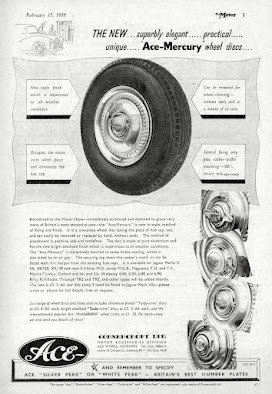Embellish (pronounced m-bell-lysh)
(1) To
decorate, garnish, bedeck or embroider an object.
(2) To
beautify by ornamentation; to adorn.
(3) To enhance a statement or narrative with fictitious additions.
1300–1350: From the Middle English embelisshen from the Anglo-French, from the Middle French embeliss- (stem of embelir), the construct being em- (The form taken by en- before the labial consonants “b” & “p”, as it assimilates place of articulation). The en- prefix was from the Middle English en- & in-. In the Old French it existed as en- & an-, from the Latin in- (in, into); it was also from an alteration of in-, from the Middle English in-, from the Old English in- (in, into), from the Proto-Germanic in (in). Both the Latin and Germanic forms were from the primitive Indo-European en (in, into) and the frequency of use in the Old French is because of the confluence with the Frankish an- intensive prefix, related to the Old English on-.) + bel-, from the Latin bellus (pretty) + -ish. The –ish suffix was from the Middle English –ish & -isch, from the Old English –isċ, from the Proto-West Germanic -isk, from the Proto-Germanic –iskaz, from the primitive Indo-European -iskos. It was cognate with the Dutch -s; the German -isch (from which Dutch gained -isch), the Norwegian, Danish, and Swedish -isk & -sk, the Lithuanian –iškas, the Russian -ский (-skij) and the Ancient Greek diminutive suffix -ίσκος (-ískos); a doublet of -esque and -ski. There exists a welter of synonyms and companion phrases such as decorate, grace, prettify, bedeck, dress up, exaggerate, gild, overstate, festoon, embroider, adorn, spiff up, trim, magnify, deck, color, enrich, elaborate, ornament, beautify, enhance, array & garnish. Embellish is a verb, embellishing is a noun & verb, embellished is a verb & adjective and embellisher & embellishment are nouns; the noun plural is embellishments.
The meaning "dress up (a narration) with fictitious matter" was first noted in the mid-fifteenth century and was an acknowledgement of a long (if sometimes hardly noble) literary tradition. It was exemplified by the publication in 1785 by German author Rudolf Erich Raspe (1736-1794) of Baron Munchausen's Narrative of his Marvellous Travels and Campaigns in Russia, a collection of extraordinary stories, based (loosely) on the tales told by the real-life Baron Hieronymus Karl Friedrich, Freiherr von Münchhausen (1720-1797). The real baron was prone to quite some exaggeration in the tales of his travels but never went as far as Herr Raspe had his fictional baron flying to the moon. The technique of enhancing a statement or narrative with fictitious additions (ie lies) was later perfected by the author and one-time Tory politician Lord Archer of Weston-super-Mare (b 1940) and crooked Hillary Clinton (b 1947).
Lindsay Lohan in bikini embellished with faux (synthetic) fur, photo-shoot for the fifth anniversary of ODDA magazine, April 2017.
In the matter of Stormy Daniels and Donald Trump
Various matters relating to a payment allegedly made by (b 1946; US president 2017-2021) to adult film star (and director in the same genre) Stormy Daniels (Stephanie Gregory Clifford; b 1979) are currently before a New York criminal court. When a member of Mr Trump’s legal team suggested she may have a “propensity to embellish” when giving evidence, counsel was using the word “embellish” in the crooked Hillary sense of “lie”. Lawyers have many ways to suggest those being cross-examined are lying and embellish is one of the more euphemistic though not as inventive as “economical with the truth”. That one will forever be associated with former UK cabinet secretary Sir Robert Armstrong (1927-2020; later Baron Armstrong of Ilminster) who, under cross-examination in the “Spycatcher” trial (1986), when referring to a letter, answered: “It contains a misleading impression, not a lie. It was being economical with the truth.” Whether the old Etonian was aware of much post-Classical writing isn’t known (at Christ Church, Oxford he read the “Greats” (the history and philosophy of Ancient Greece & Rome)) but he may have been acquainted with Mark Twain’s (1835-1910) Following the Equator (1897) in which appeared: “Truth is the most valuable thing we have. Let us economize it.” or the earlier thoughts of the Anglo-Irish Whig politician Edmund Burke (1729-1797) who in his Two Letters on the Proposals for Peace with the Regicide Directory (1796) noted: “Falsehood and delusion are allowed in no case whatsoever: But, as in the exercise of all the virtues, there is an economy of truth.” Just as likely however is that Sir Robert had been corrupted by his long service in HMG (Her Majesty’s Government) and was thinking of: “The truth is so precious, it deserves an escort of lies.”, a phrase often attributed (as are many) to Sir Winston Churchill (1875-1965; UK prime-minister 1940-1945 & 1951-1955), but there’s some evidence to suggest he may have picked it up from comrade Stalin (1878-1953; Soviet leader 1924-1953) and even if it wasn’t something the old seminarian coined, it was the mantra by which he lived so he deserves some credit. Sir Robert’s phrase entered the annals of legal folklore and was good enough to have been lifted from a script from the BBC satire Yes Minister.
Courtroom sketch of defendant, judge, prosecutor & witness by Jane Rosenberg (b 1949), Manhattan Criminal Court, New York, 7 May 2024.
The work of courtroom sketch artists became a feature of the trial process in many Western courts during the years when photography was banned and Ms Rosenberg has since 1980 become of of the most highly regarded practitioners. Of her art, she was quoted, in a statement she stressed was non-political and not a comment on the legal merit of his case, that Mr Trump was “fun to draw”. Something of the character of law will be lost if the courtroom sketch artist is replaced by an artificial intelligence (AI) bot.
The
exchange on 7 May wasn’t the first time “propensity” and “embellish” had been
entered into the trial transcript. On 23 April, the court heard about former National Enquirer publisher David
Pecker’s (b 1951) “secret arrangement”
negotiated in 2015 with Mr Trump and his then attorney (and “fixer”) Michael
Cohen (b 1966), the terms of which included the publication (1) promoting Mr
Trump’s presidential ambition and (2) publicizing Mr Cohen’s “research” relating
to Mr Trump’s opponents: “He would send
me information [about the others seeking the Republican nomination for the
2016 presidential election] and that was
the basis for our story, and we would embellish (in the National Enquirer tradition "embellish" is a spectrum word ranging in meaning from "exaggerate" to "untrue").” Mr Pecker testified,
adding the arrangement was kept secret from all but a handful of his senior
executives: “I told them [the
National Enquirer’s East and West Coast bureau chiefs] we were going to try and help the campaign, and to do that we would
keep it as quiet as possible.” National
Enquirer has bureaux; who knew?
Stormy Daniels.
The day before, Mr Trump’s team pursued a line of questioning designed
to cast doubt on Mr Cohen’s credibility, suggesting that for him Mr Trump has
become “an obsession” and that he wishes to see him incarcerated and has “a propensity to lie.” “He has
a goal, an obsession, with getting Trump. I submit to you he cannot be trusted. His entire financial livelihood depends on
President Trump’s destruction… You cannot make a serious decision about
President Trump by relying on the words of Michael Cohen.” Counsel argued. Mr Cohen had certainly left no doubt the case
was on his mind, the previous night posting on-line that he’d experienced some “…mental excitement about this trial...” and
the testimony he would deliver.
The
highlight thus far however came when the state called to the stand Ms Daniels where in greater detail than expected she described the encounter with Mr Trump
which led to the hush-money scheme. The
word the press seemed to settle on for their reports was “salacious” but the two things which
most struck legal analysts was (1) the unusually wide interpretative latitude
the judge appeared to allow himself when deciding the nature of the many details Ms
Daniels should be allowed to introduce and (2) the curious reticence of defence
counsel in objecting to the course things were taking. Both of these aspects may be considered if
the case goes on appeal when often a ruling is made on what evidence is
relevant and what is so prejudicial that under the evidentiary rule it shouldn’t have
been admitted and heard by the jury.
Over lunch, Mr Trump’s
team must have discussed these matters because they moved a motion requesting the judge
declare a mistrial on the grounds Ms Daniels’ testimony contained prejudicial
and irrelevant comments which: “…aside
from pure embarrassment…,” these details did nothing but “…inflame the jury.” The judge did acknowledge Ms Daniels was a
difficult witness to control and agreed: “...it would have been better if some of these things had been left unsaid.”
but denied the motion, saying defense counsel should have raised more
objections during the testimony and that cross-examination would permit them to
redress things, adding that at one point he had intervened to limit her
statements simply because the defence had not.
The defense did actually raise a number of objections, a slew of which
the judge upheld, after which he cautioned the witness: “Just listen to the question, and answer the question.” Some may have recalled the infamous cross-examination
of Hermann Göring (1893–1946; leading Nazi 1922-1945, Hitler's designated
successor & Reichsmarschall 1940-1945) by Justice Robert Jackson
(1892–1954; US Supreme Court Justice 1941-1954; Chief US Prosecutor at the
Nuremberg (IMT) trials of Nazi war criminals 1945-1946) at the first Nuremberg
Trial (1945-1946) when the judges of the IMT (International Military Tribunal) declined
to “control the witness”, leaving
Justice Jackson increasingly exasperated by Göring’s long answers which the prosecutor
though mostly irrelevant but which were of great interest to at least some of
the judges and permitted under the terms of the court’s charter. Of course, the IMT wasn’t limited by New York’s
rules on admissibility of evidence.
Stormy Daniels (2019) by Robert Crumb. Robert Crumb (b 1943) is an US cartoonist, associated since the 1960s with the counter-culture and some strains of libertarianism; he was one of the most identifiable figures of the quasi-underground (in the Western rather than the Warsaw Pact sense) comix movement.
However,
in one exchange during defense cross examination, there was no question of any propensity
to embellish, counsel asking: “Am I
correct in that you hate President Trump?” to which Ms Daniels replied: “Yes.”
No ambiguity there and although not discussed in court, her attitude may not
wholly be unrelated to Mr Trump’s rather ungracious description of her as “horse face”. Really, President Trump should be more
respectful towards a three-time winner of F.A.M.E.'s (Fans of Adult Media and
Entertainment) much coveted annual "Favorite Breasts" award.
Donald Trump leaving Manhattan Criminal Court, New York, 7 May 2024.
Speaking briefly to reporters after leaving the court, Mr Trump said: “This was a very big day, a very revealing day, as you see, their case is totally falling apart, they have nothing on the books and records and even something that should bear very little relationship to the case, it's just a disaster for the DA.”























